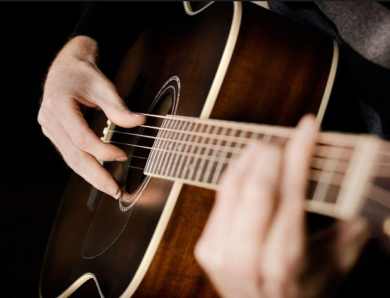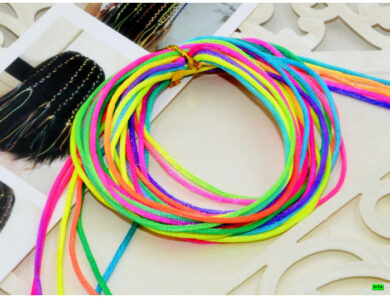How to replace valve guide bushings
Repair of a head of the block of cylinders (GBC) most often involves the need to replace the guide bushings of the timing valves. For replacement the Extruded old plugs of valves are necessary, then new elements are installed in their place. There are several ways to extrude old bushings. The simplest and most incorrect is to knock out the bushings with a hammer and chisel. This percussion method is widely used in the practice of "garage" masters. Note, that the extraction of the bushings in such cases often ends in damage to the seat in the cylinder head.
We also recommend reading the article about it, how to weld a crack in a cylinder block or a cylinder head. In this article you will learn about the available ways to repair cracks BC and cylinder head.
A slightly more correct option is to use a special stepped mandrel made of brass or bronze instead of a chisel. This mandrel is mounted on the side of the saddle on the guide sleeve, then beaten with a hammer. This method of extruding bushings reduces the risk of damage to the cylinder head, but does not exclude completely. The best way to extrude the bushings is to use a special stripper. This remover for removing the valve guide bushings is also used for further installation of new bushings in the cylinder head. Next, we will look at ways to replace the valve guide bushings with a mandrel and puller.
How to change the guide bushings yourself
First, consider the method of extruding the guide valves with a mandrel, as this method is the most common. Before replacing the bushings, the springs and the valve itself are removed. As mentioned above, the mandrel for vypressovyvaniye of plugs of valves is used stepwise. A step is needed for that, to reduce the risk of damage to the seat in the head of the unit. The smaller diameter of the mandrel allows it to enter the sleeve on 3-4 cm, and with a gap. The larger diameter allows free passage through the socket in the cylinder head.
Note, that often bronze bushings are quite easily extruded from the head, as installed with relatively weak tension. If it is necessary to extrude the directing plug of the valve from more rigid material, then the cylinder head should be preheated to temperature 140-160 degrees Celsius in an electric furnace or up to 80-90 degrees in a container of hot water. Heating the cylinder head will reduce the tension.
In extreme cases, the tightly pressed sleeve must be drilled. pay attention, it is allowed to do it only on the machine, as attempts to drill the valve sleeve with a drill will lead to skew and damage to the seat. The sleeve is also preferably not fully drilled, that is, leave the walls about 1 millimeter thick. This reduces the risk of damage to the nest, and the rest of the sleeve is easily removed by the mandrel.
The next step is to measure the tension of the new bushing before installing it in the head, as it is strictly forbidden to press new bushings before measuring tension. To measure the tension you need to determine the diameter of the socket and the sleeve. The indicator on a mark from is allowed 0.03 to 0.05 mm. This figure should be understood as follows, that the diameter of the new sleeve exceeds the diameter of the socket by the specified value.
Weak tension through the sockets will require an increase in the diameter of the socket, where then the repair plug of the increased size is established. It is also necessary to drill the socket in the cylinder head exclusively on the machine, which will avoid possible skew when making a new hole. As for the degree of tension of the repair sleeve, this figure should be maximized, since in the new hole the material is harder and has a large roughness on the surface of the walls.
To press in the new valve bushings, the unit head must be reheated in the furnace in the same way as when removing the tension when removing. At the same time, the new bushings are cooled. Pressing new bushings without cylinder head heating is incorrect. This applies to the aluminum alloy cylinder head, in which deformation occurs in the presence of strong tension. After such installation the final tension will be less than necessary. As a result, after assembling the motor and heating it during operation, the valve guide sleeve will not fit snugly., and the valve itself in the specified sleeve will suffer from loss. Overheating of the valve will occur as a result, that the efficiency of removal of excess heat from the valve stem to the cylinder head will be significantly reduced. The fault will progress quickly, the sleeve will begin to dangle in the landing slot, requiring re-disassembly of the engine for repair.
Now let's move on to that, how to install the valve guide bushings in the cylinder head. The pressing itself is implemented using the mandrel described above, on which it is necessary to strike with a hammer pair of sharp blows. Keep in mind, The presence of a special thin belt on the new bushing to accommodate the oil cap requires that, so that the mandrel does not rest on either side of the belt. Ignoring this recommendation can lead to this, that the sleeve is deformed or broken.
The final calibration of the holes is the end of the process of installing the valve guide bushings by the shock method. This procedure is performed using scans. It is recommended to use diamond scans, as this tool is more durable and provides a stable expected result compared to conventional steel deployments. After processing of apertures it is necessary to carry out check of backlashes of valves in plugs taking into account the recommended parameters. Inlet valve clearances must be on 0.01 mm less than the final, which are more heated during the operation of the internal combustion engine (example, 0.02 — 0.04 against 0.03 — 0.04 mm). Note, that it is not necessary to achieve the minimum allowable clearances. It should be added, that this statement is especially relevant for exhaust valves, as small gaps in the guide bushings can cause them to jam.
Extrusion and installation of guide bushings by the puller
Next, consider the most optimal way of extruding the guide valves with a special puller-installer bushings. Let's start with that, that strippers are different and are universal tools. With this solution you can remove the valve bushings on different cylinder heads without the risk of damaging the landing plane in the head of the unit. In other words, the presence of a stripper minimizes possible burrs or other defects holes compared to the use of a hammer and mandrel.
Working with the stripper involves:
- a sleeve of appropriate size is placed under the tool. The selection of such a sleeve is based on that, so that when installing the stripper, the threaded part came out of the valve guide on 20-30 mm;
- then the stripper is installed and fixed with a pair of nuts, which are specially turned. It is also allowed to use one nut, if provided by the design of the stripper;
- the next step is the need to hold the upper key remover in its central part;
- at the same time with this lower key the directing plug of the valve is extruded;
After, as a certain effort is applied to the Stripper, you can hear a clear click. Such a sound will indicate that, that the valve sleeve is torn from the seat and moves outward from the hole in the cylinder head. Next, you need to turn the screw of the stripper until then, while the sleeve is NOT ??will be deleted. Then it is necessary to prepare new plugs for pressing. Then repeat all the preparatory procedures, described above when installing the bush mandrel. Additionally, you can lubricate the valve sleeve with engine oil to facilitate fitting into the slot.
To press the bushings with a stripper will be needed 2 spacers, which have a conical chamfer and rest against the valve seat. One part must have a larger diameter, and the other smaller (accordingly, that the seat of the intake valve is larger, and the exhaust valve is smaller). Also again it is necessary to carry out selection of spacer plugs of the stripper, taking into account the need for the threaded part of the stripper on 20-30 mm when installing a new valve sleeve.
At the same time, damage to the belt must be avoided (burtika) on the guide sleeve, as this belt serves as a place of fastening of a rubber cap. If the belt is damaged during installation, the tightness of the oil seal cap will be broken. In order not to damage the belt, a separate nut is used, which rests on the guide without the risk of damaging the belt. It turns out, given a nut to guide the valve sleeve. pay attention, the installation of an additional nut reduces the number of threads on the stripper stud. For this reason, another puller sleeve should be screwed in to reduce the thread load.
We also recommend reading the article about it, what clearance should be in the piston ring. In this article you will learn about the correct selection of the thermal gap of the piston rings during their replacement or during the overhaul of the engine.
You can now press the sleeve with the stripper. The end of the press is the moment, when scrolling the pickup becomes harder. That will speak for itself, that the sleeve dropped to the seat and rested on the retaining ring, which is made on the guide to adjust the correct fit. You no longer need to rotate the camera after the effort, as you can damage the guide. It's time to disassemble and remove the stripper, since the new sleeve is already pressed into the head of the unit.
Next, the bushings will need to be adjusted to the landing size. This is necessary in that case, if the guide is slightly crushed during pressing. This procedure is performed similarly to that described above, that is, by scan. The scan is inserted into the hole and scrolls without pressure, due to which there is a careful deployment. After finishing, you should blow out the remnants of chips with compressed air.
The final stage is the mandatory measurement of the diameter of the hole in the guide sleeve. A special indicator gauge is used for testing. The thickness of the valve stem should also be measured with a micrometer. If everything is done correctly, then the gap will be within acceptable limits.
Then you can insert the valve and check the quality of its fit to the saddle. In that case, if the valve does not fit snugly against the seat, then there is an obvious loss of alignment between the center of the sleeve and the center of the valve seat. This phenomenon sometimes occurs after replacing the valve guide bushings. To solve this problem, you need to grind the valves. To grind the valve, you need to process a special cone valve seat. After grinding the valves, the process of replacing the guide bushings can be considered complete.




